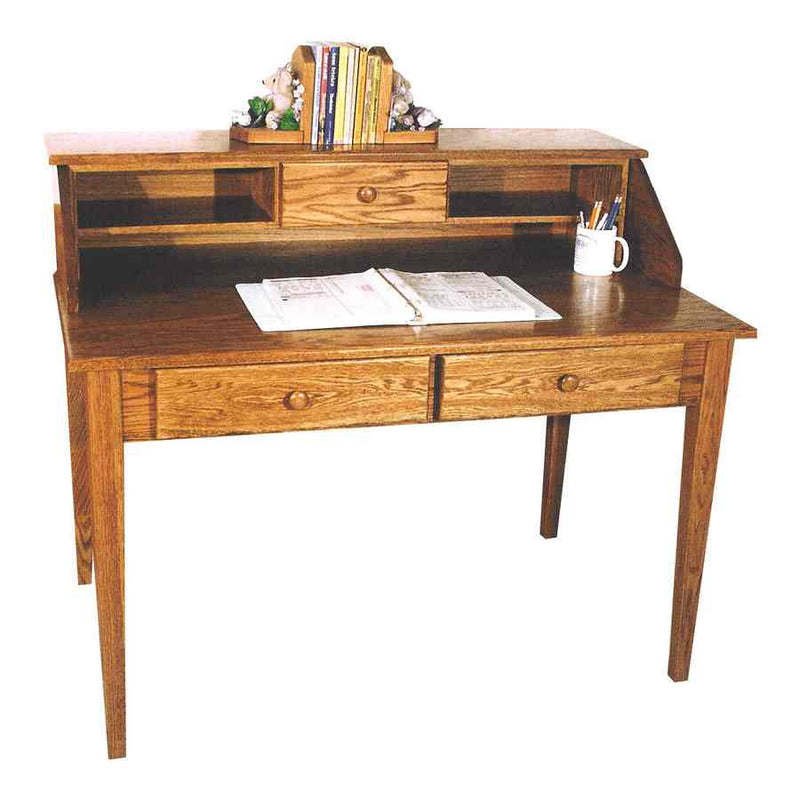“The particular grace of a Shaker chair is due to the fact that it was made by someone capable of believing that an angel might come and sit on it.” -Thomas Merton (American Trappist monk, 1915-1968)*
When furnishing your own home, there are some qualities you will do well to look for in the furniture you choose. Simple. Functional. Comfortable. Quality workmanship. The furniture style you’re describing is part of the legacy of Shaker style furniture.
Who are the Shakers?
The Shakers are a religious sect that branched off from the Quakers. Founded in 18th century England, the Shakers are known for their dedication to hard work and a simple, orderly lifestyle free of excess and luxury. Shakers practiced absolute equality between men and women, and were unusual for their time because they revered both men and women as elders within the community. As a communal-living society, the Shakers needed furniture large enough to comfortably fit everyone. Because of their religious beliefs, they viewed every well-crafted piece of furniture as an act of prayer.What Characterizes Shaker Furniture?
Much like its creators, Shaker style furniture is characterized by its functionality, simplicity, and incredible craftsmanship.The design in Shaker style furniture lacks excessive adornment, elaborate accents, or unnecessary curves. However, that’s not to say the furniture isn’t stylish; in fact, the solid, graceful designs can fit into any home’s design palate, from high-end and luxurious to a modest, mix-and-match style. The detail in Shaker furniture is delicate and well-balanced. Chair legs are gently tapered or vase-turned, in a thin-line design style reminiscent of Shaker art work and the unique Shaker system of musical notation. Homeowners are drawn to Shaker furniture because of its durability; while original Shaker furniture can be costly, the pieces are built with care and will last for years. After all, the original builders needed comfortable, durable pieces that would last through large religious gatherings and years of continual use. Communal living also influenced the size of the furniture; a Shaker dresser, for example, offers plenty of storage, and a Shaker style bookcase can house a modest library. Original Shaker bookcases and cabinets showcase dovetailed joinery, through-mortise construction, and other extremely creative woodworking techniques still emulated by master craftsmen today.Craftsmanship Uses Solid, Locally-Sourced Wood
For materials, Shaker craftsman used inexpensive, light local wood that was easily harvested and would fit in any room from the dining room to the bedroom. Common woods they used were maple, cherry, hickory, pine, walnut, and poplar. Shaker style furniture is often painted or stained; in keeping with their emphasis on durability, they typically stained their furniture dark red or green since those colors don’t show dirt. However, yellow and orange were also used. Blue, associated with purity, was reserved for elders and furniture for the chapel.Shaker Chairs and the Emergence of the Rocking Chair
The Shakers have become especially known for their chairs, which used a ladder-back style. The Shakers were the first people in the United States to use and manufacture the rocking chair on a mass scale. Their tilting chair is also popular; this type of ladder-back style chair used an unusual ball-and-docket style in its feet, which lets it tilt backwards. Some styles of Shaker chair feature gently rounded spindle backs. The construction used to assemble Shaker chairs and benches was extremely sophisticated and innovative. The spindles characteristic of the style were turned on a lathe to achieve a soft taper and then “seated” into the seat and rail of a chair or bench. No glue, nails, screws, or metal were used in the construction of these sturdy seats. Perhaps the most unique element of Shaker interior design (though they would not have used that phrase to describe it!) was the use of pegs. Everything except for tables, chests, and bookcases was made to be lightweight enough to hang on the wall (including chairs). In keeping with the simplicity of the Shaker lifestyle, everything that was not in use was put away. The pegboards and coat racks we hang in our hallways today are directly descended from Shaker furnishings. One of the strongest religious practices of the Shaker community was the incorporation of dance into their times of worship. The benches and chairs in their chapels were sturdy, but lightweight enough to be easily moved to the side or hung on the walls to make space for their rousing, foot-stomping dances.Where is Shaker Furniture Today?
Today, many types of original Shaker furniture have been preserved and are featured in art and historical museums in the United States and England. There are also many private collections of Shaker furniture throughout the country. Shaker tables, chairs, rocking chairs, and cabinets are especially popular in museums and collections. Interestingly, the simple principles of Shaker design have inspired many modern furniture designers to create furniture with clean lines and no extra ornaments; in fact, the Shaker style has nearly become synonymous with colonial American furniture style. If you’re interested in learning more about Shaker style furniture and how it could complement your home, contact Plain and Simple today.
*This word from Thomas Merton is displayed in bold letters on the wall of the Loyola University Museum of Art as part of their triple exhibition on Shaker art, design, and architecture. The show was beautiful and informative, and was open to the public through April 26, 2015. From pendulum clocks to cloth shoes, from intricate drawings of spiritual revelation to humble wooden bowls, this collection was a remarkable picture of the story of Shaker life. I visited the gallery in early 2015 to expand my knowledge of Shaker culture, and to see beautiful original Shaker furniture on display. The fine craftsmanship of these wooden pieces has kept them in excellent condition for several lifetimes. I saw many still-functional pieces that are over 200 years old! These are true heirlooms of North American culture.

